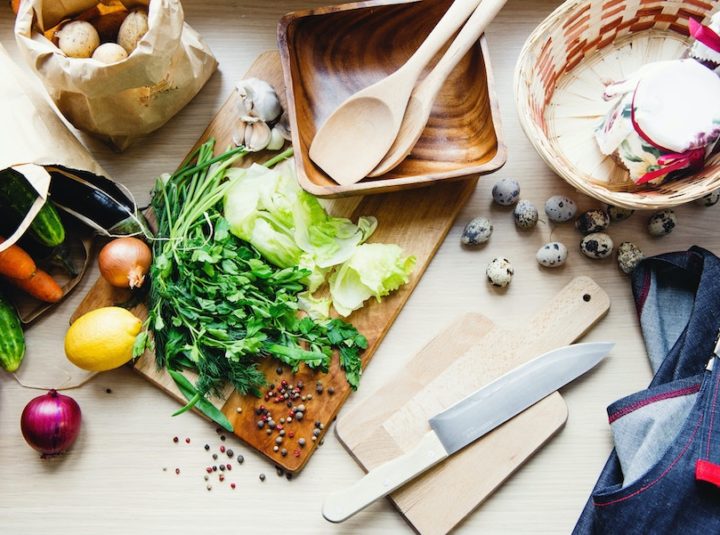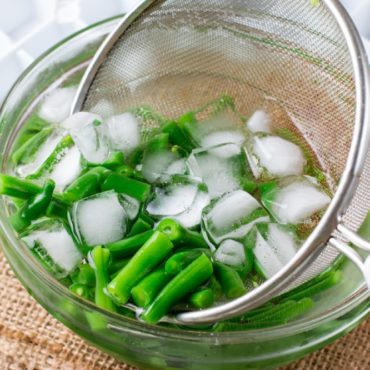Food safety is a topic you take for granted until you’re the one cooking. Once you start cooking, this is sh*t you need to know so you don’t kill anyone (or in reality get anyone sick).
It’s not taught in school so unless you paid attention to your grandmother, you’re probably clueless about sell dates for perishables and what cross-contamination is. Who are we to judge? But seriously, keep reading.
Food Safety While Shopping
Food safety starts at the grocery store. This what you need to know:
- Avoid cross-contamination in the cart. Consider bagging raw proteins in a separate part of the cart so they do not touch other items. Yeah, that weird freaky juice in meat packaging you don’t want touching anything else.
- Don’t buy meats that feel warm to the touch, smells funny, or comes in packaging with visible tears or leaking. (I mean, EW)
- Skip fruits and vegetables with visible signs of spoilage. Seems obvious, but I often walk home with a molding piece of fruit and have ZERO clue. You aren’t alone!
- Check eggs before you check out to ensure that they have clean shells that are free of cracks. I ain’t got money to waste!
- Keep a cooler bag in your car and add frozen foods and perishables to that bag before leaving the parking lot then head straight home to unload to keep chill foods cool and safe. (I mean sure, Jan) But at least try and get the cold stuff to a fridge ASAP!
- Check the “sell-by” dates on canned and packaged goods. Avoid foods with torn labels. To keep perishable items (i.e., milk, eggs, chicken, fish, etc.) as cool as possible, shop for those last, as close to when you check out as possible.
Food Safety During Food Prep
Keep these tips handy:
- Wash your hands before you begin in warm soapy water then repeat this key step throughout the process, especially after handling raw proteins. We hope you did this before, but please start, come on it’s 2020!
- Use separate cutting boards for proteins and other items. Clean them with warm soapy water in between uses.
- Raw meats should not be touching other things unless they are being cooked together. For example, don’t cut up a chicken breast and then use the same knife and cutting board to prep a salad that is going to be eaten raw.
- Anything that touches a raw protein should be cleaned between uses. This includes spoons, your hands, cutting boards, bowls, your sink, etc.
Food Safety When Thawing and Cooking Meat
When it comes to meat, the temperature is key.
- Do NOT put cooked meat back on the platter you put raw meat on. I saw my boyfriend’s dad do this with burgers once and I had to politely say “are you trying to kill us?”
- Defrost food in the refrigerator, not your counter. Coldwater or the microwave may be used if you are in a bind on time.
- Use a thermometer when cooking to ensure foods are cooked to the proper temperature.
- Store meat in the lowest drawer/compartment of your fridge in case it leaks you don’t want it dripping on everything else (gross & unsanitary)
- For a complete guide on thawing meat check out our guide.
Food Safety Summed Up
Practice these food safety principles in good health:
- Remember the food safety four: clean, separate, cook, and chill.
- Lukewarm is bad. Chill it or cook it but don’t allow food to be in temperatures between 40°F and 140°F (groceries or cooked dishes) for longer than two hours (one hour if it’s hot).
- Marinades do NOT kill bacteria.
- Salmonella has no smell.
- You have only a couple of days to cook ground meat, fish, and poultry after you bring it home from the grocery store.
- Dry pasta, beans, rice, and other prepared items can last in the pantry for up to two years so be sure to rotate foods in an emergency kit or cellar to ensure they stay safe to consume.
- Fruits and vegetables must be washed. (Seems obvious but yeah)
Have your own tips to share? Post them here!



